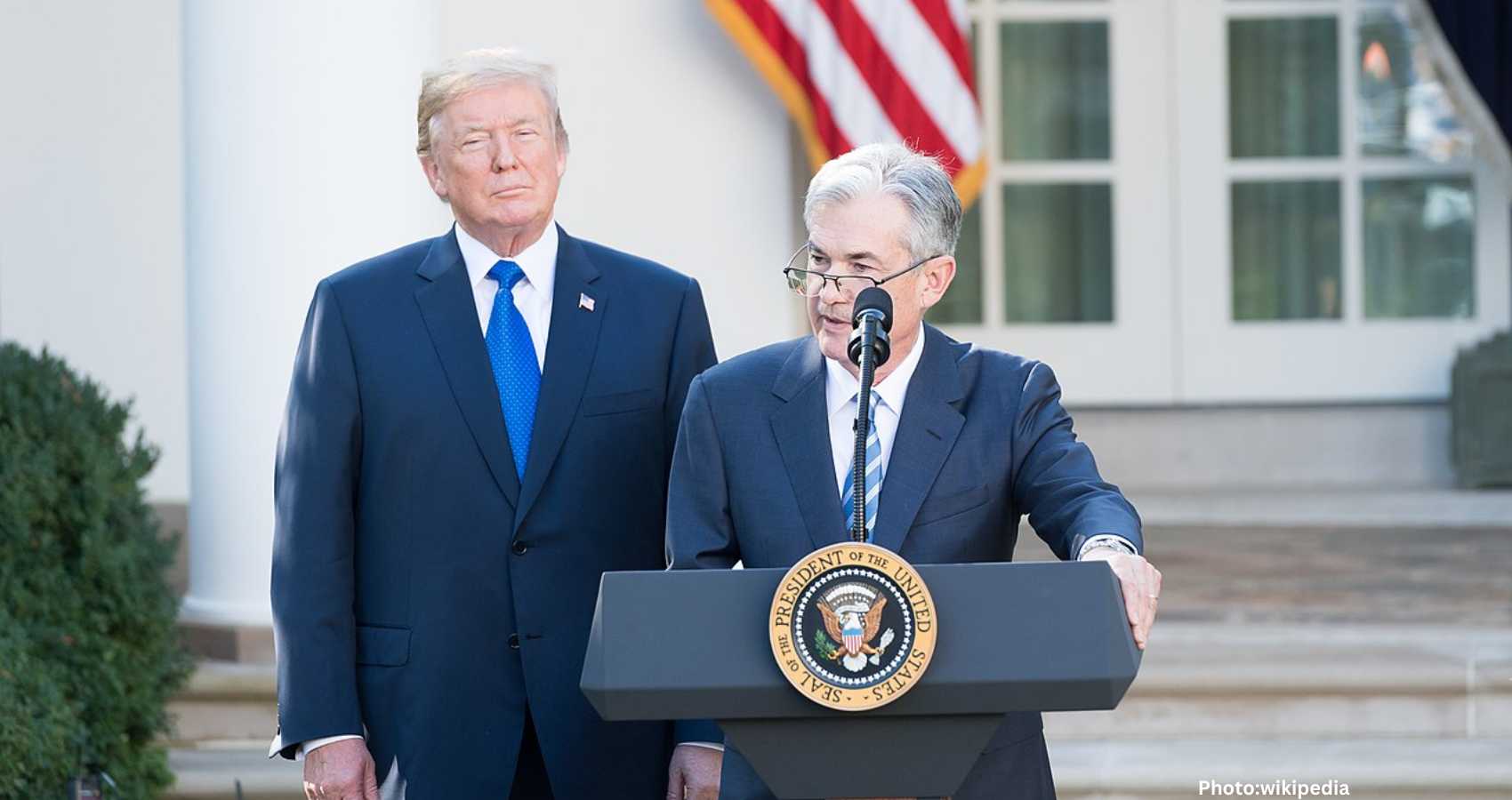The FTSE 100 experienced one of its worst trading sessions in recent months, dropping more than 120 points, or over 1.4%, amid global market turbulence. This decline follows troubling economic data from the United States, where disappointing jobs and factory output figures have raised concerns about the Federal Reserve’s decision to leave interest rates unchanged.
Chris Beauchamp, chief market analyst at IG, noted the abrupt shift in market sentiment: “In just two days, markets have gone from anticipating a Fed rate cut to worrying about a looming recession. Today’s significant payroll miss and the surge in US unemployment have triggered a fresh flight from risk assets, already unsettled by poor earnings reports and concerns about broader conflict in the Middle East. Investors now hope for a half-percentage-point rate cut in September but fear that even this may be too little, too late to prevent a US recession.”
The sell-off was particularly harsh on technology stocks, with Amazon losing nearly $200 billion in market capitalization after its revenue of $148 billion fell short of estimates. Amazon’s stock plunged 11.2%, part of a broader decline among the Magnificent Seven, excluding Apple, which managed to rise on strong results. Nvidia dropped 5%, and Microsoft fell 2.5%.
Meanwhile, in the UK, International Consolidated Airlines Group (IAG), the parent company of British Airways, saw its shares rise by more than 4% after reinstating its dividend. Panmure Liberum commented, “The resumption of dividends highlights the strength of cash generation and the balance sheet. Management’s outlook for the year remains positive, and we have modestly raised our already above-consensus forecasts.”
As the FTSE 100 tumbled, there were notable movements in commodities and currencies. Bitcoin fell by 0.65%, trading at $64,871, while Brent Crude dropped 3.15% to $77.02 per barrel. In contrast, gold edged up by 0.3%, reaching $2,453 per ounce.
The broader global market sentiment was bleak, with the FTSE 100 inching closer to a one-month low, down by 95 points or 1%. Kiyoshi Ishigane, chief fund manager at Mitsubishi UFJ Asset Management, expressed surprise at the severity of the downturn: “I didn’t expect stocks to fall this much. This likely stems from concerns about a significant collapse in the US economy, which would be the most troubling scenario for Japanese stocks.”
José Torres, senior economist at Interactive Brokers, remarked, “The initial relief from Fed chief Powell hinting at a possible rate cut in September has turned sour, as investors are now worried that the central bank isn’t cutting rates soon enough.”
The FTSE 250 also suffered, dropping more than 2% after the release of US jobs data. Across the Atlantic, US markets opened sharply lower, with the Dow Jones falling 358 points, the Nasdaq down 405 points, and the S&P 500 losing 80 points. The US Bureau of Labor Statistics reported a disappointing addition of 114,000 jobs in July, well below the expected 175,000, and a rise in unemployment to 4.3%, the highest since October 2021. This news led to a surge in gold prices and a drop in US Treasury yields as investors sought safer assets.
Daniela Sabin Hathorn, an analyst at Capital.com, described the market reaction as a “meltdown,” driven by fears that the Federal Reserve’s decision to hold interest rates was a mistake, potentially pushing the US economy toward recession. She added, “It now seems almost certain that the Fed will cut rates in September, but the question is by how much.”
In corporate news, Royal Mail’s potential takeover by Czech billionaire Daniel Kretinsky faced a national security review under the UK’s National Security and Investment Act. This review could lead to the deal being blocked or subject to specific conditions if significant concerns are raised. The probe will also examine Kretinsky’s other business interests, including his gas pipeline operations in Russia.
As the FTSE 100 continued to slide, Melrose Industries and Ashtead Group were among the biggest losers, with drops of 7.7% and 6.3%, respectively. On the positive side, GSK’s shares rose 4.1% following expanded approval for its cancer drug Jemperli.
The US Treasury bond yields fell sharply, with the 10-year bond yield dropping to 3.79%, its lowest since December, and gold prices spiking to $2,486 per ounce before retreating slightly. The weaker-than-expected US jobs data fueled concerns about a potential recession, as reflected in the market’s flight to safer assets.
Former US National Economic Council deputy director Bharat Ramamurti attempted to calm fears, stating, “It’s not time to panic. There are still many underlying signs of strength in the economy, and unemployment remains low by historical standards.” However, he acknowledged that the Fed might have erred by not cutting rates earlier and suggested a more significant reduction might be necessary in September.
Global markets were impacted by the disappointing US jobs report, with Japan’s Nikkei 225 index dropping 2,216 points to close at 35,909, marking its second-worst trading session ever. Europe’s markets also fell, with the Stoxx 600 and Germany’s Dax down by 1.25% and 1%, respectively.
Wizz Air faced a tough week, with its shares falling another 5% after revealing a decline in passenger numbers and an increase in carbon emissions for July. The budget airline has been struggling with engine issues and disruptions caused by the Crowdstrike/Microsoft IT outage, leading to grounded flights and a suboptimal fleet mix.
Nintendo also reported a significant drop in profits, with shares falling more than 2% in Tokyo. The gaming giant saw a 55% decrease in profits for the three months to June, with sales falling across its game software and hardware divisions. Attention is now turning to the potential successor to the Switch console, with an announcement expected by April 2025.
Capita, a business outsourcing company, saw its shares tumble by 6.5% as it reported a need to cut costs and address contract losses despite posting a return to profit in its interim results. The company aims to save £160 million by June next year, but its revenue fell by 16% due to contract losses.
In China, the Shanghai Composite and blue-chip CSI 300 indexes both closed down by about 1%, while Hong Kong’s Hang Seng index fell 2.1%, as the country dealt with the fallout from the US market sell-off and ongoing geopolitical tensions.
Intel faced severe pressure after announcing over 15,000 job cuts as part of a cost-saving effort. The chipmaker’s stock dropped more than 20% in premarket trading following a wider-than-expected $1.6 billion loss in the second quarter.
Luxury stocks also faced pressure, with Italian footwear and leather goods company Salvatore Ferragamo reporting a 41% drop in operating profits. This led to declines in shares of Burberry, LVMH, and Hermes, which fell by more than 1%.
Aston Martin shares slipped by around 0.6% after the luxury carmaker raised £135 million through a debt issue to scale up sales. The company’s chief financial officer, Doug Lafferty, noted that the bond issue was well-received by lenders, providing additional liquidity for the company’s expansion plans.
As global markets continued to reel from the US economic data, the FTSE 100 managed to stabilize slightly, holding around 0.25% lower. However, the overall market sentiment remained cautious, with investors closely watching upcoming US jobs data for further indications of the economic outlook.



